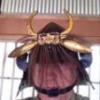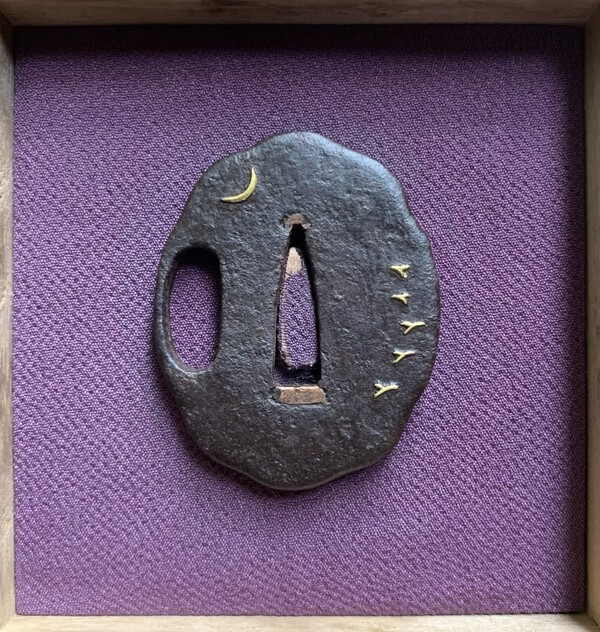-
Posts
14,235 -
Joined
-
Last visited
-
Days Won
271
Content Type
Profiles
Forums
Events
Store
Downloads
Gallery
Everything posted by Bugyotsuji
-
Additional thought. This is a very plain, basic long-barrel smoothbore gun, so without a Mei, there is little else to indicate gunnery school or place of manufacture. Helpful remaining pointers might be the fact of four mekugi holes, (one, two or three are more common in my experience), the broad brass lock band, the shapes of the lockplate and sights, the water droplet trigger, and any metalwork inlay on the stock, etc.
-
Ahhh........................ just craning my neck to see. John, just getting my hat and coat.
-
Well the three-legged crows of Japan are famous, so it could be two three-legged egrets!?!?
-
Hi David, Apologies for the delay. Tanegashima threads do not come up in my 'new posts' for some reason, and the email notification is usually a couple of days late. At first I thought your new gun was not Japanese, but now I can see that it is. The only part of the Mei that you have photographed is the barrel construction, i.e. 二重巻張, Ni-ju makibari, or double helix bound barrel. There should be more writing on the lowermost facet of the barrel base. Can you get shots of the bisen breech screw, or even the head of it? As to pins missing, no problem; the simplest thing is to make some with bamboo or wood. You can try toothpicks and skewers for size, and file them to fit perfectly, inserting from the right side of the stock. Once you get the hang of making and playing with these, you can try to source smoked bamboo, even better for the job. Having said that, your gun has been through various changes and modifications, so it is possible that the mekigi holes and under-barrel loops do not match up, and that may be why it has been fitted with brass retaining rings.(?) PS Some people like to see fancy inlay on Japanese barrels, but personally speaking they do not interest me as they are usually (but not always) added later as extra decoration for sale purposes. Looking forward to closer shots from various angles!
-
The Hachisuka of Awa and Tokushima used this as their Mon, and a close family branch family used the reversed Manji. For a while the first and second lords became Christian and used a bladed cross as their Mon during the Momoyama and early Edo battle periods, but later under the repressions they hid the cross, reverting to the traditional Manji.
-
Agreeing with Jean above, 廣一 Hirokazu, Ko-ichi, etc., plus 作. PS Three-crane, or two-crane?
-
If you have the time to wait for a day or so, some willing soul here will surely be along to help. PS If you have any close-ups of the decorations it can help enormously with looking up unusual plant names, etc.
-

What exactly determines the price of a nihonto?
Bugyotsuji replied to Ikko Ikki's topic in General Nihonto Related Discussion
Excellent thread. To some extent the price/value will depend too on the individual dealer and his or her reputation. -
Something Fanny? Hmmm…. Only have two, but here’s one of them. Maybe an allusion to the ancient game of Tosenkyo, throwing the fan.(?)
-
It's doable, but a lot of work for someone. The Saburo Kaneuji blade paper is of the old type, so probably not too reliable.
-
-
AF22391 鍔:江州彦根住 宗珉 – 日本刀販売の葵美術 (sword-auction.com) Another with the same Mei, Dan.
-
Natsume and other tea ceremony drawstring bags, and tied kinchaku purses came in various materials, such as cotton, silk, leather etc. I have a few real kinchaku, plus two matchlock powder flasks imitating the same style. Nice to see Namban tsuba made in this shape, protecting things of value.
-
Possibly the slimmest mimi I have ever seen!
-
Most unusual, those last two.
-
Pretty. Both the Uesugi family and the Date clan of Sendai and Uwajima, used bamboo and sparrow arrangements for their kamon, Jean.
-
Bruno, that is Ichohosai, not Issai.
-
Dale 一成 is a different Kanji than 一斎
-
-
-
Robin, trying to imagine those with Shakudo finish intact. What could they be? Strips of konbu with biwa fruit, tied as an offering??? Wasp menuki
-
Pushed forwards, over on Matt's rats 'n mice thread, by Colin et al, I find myself setting up a thread here for Tosogu illustrating wildlife. I am thinking animals, but I guess 'wilding' is a fashion nowadays, so the greenery which surrounds and supports animal life could be included too. If there are no replies, I will add a photo here in due course, with something to prime the pumps.
-
Might be nice to have a 'wildlife in Tosogu' thread...(?)















